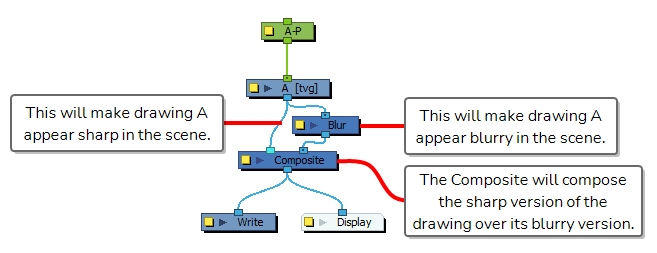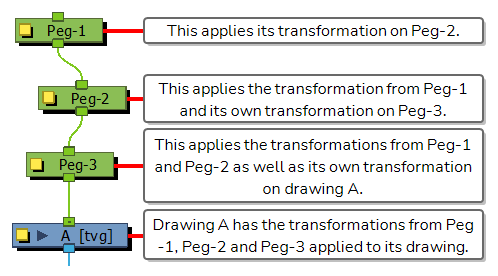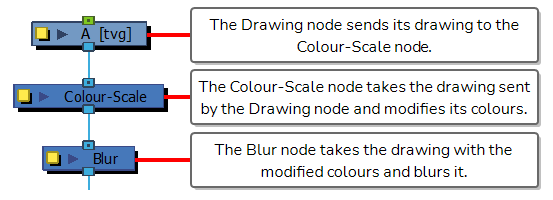The way nodes are connected together can have as important an impact on the way your elements are rendered as the nodes themselves.
It is possible to connect a node's output port to several nodes making this node have the same effect on multiple part of this scene. For example, you can have a single Peg node control several Drawing nodes by connecting it to each drawing node you want it to control.

You can also connect a single Drawing node several time to a composite. This can be useful if you want a drawing to appear both as modified by an effect and in its original form in your scene, like in this example.

Since information in the Node View travels from top to bottom, it is not possible to make the output port of several nodes connect to a single input port of a single node, as that would mean merging together images and transformations in a way that is not defined. For example, you need to use a Composite node to combine different drawings together because the Composite nodes determines the order in which the drawings are layered.
However, it is possible to combine the transformations of Peg nodes and other similar nodes together by stacking them.

Likewise, you can combine several effects by stacking them. The order in which the effects are stacked determines the order in which they are applied to the image.
